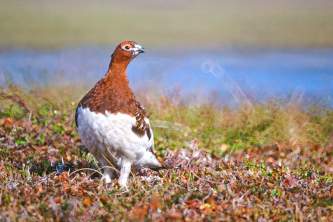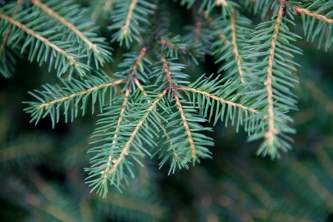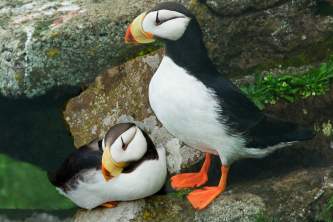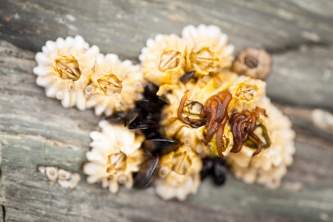Boreal Forest
By Elise Lockton
The boreal zone is a broad belt of forest that spans the top of the world covering vast expanses in Canada, Alaska, Northern Europe and Russia. In Alaska, the boreal forest is found in the interior lands between the Brooks Range, north of Fairbanks to the Chugach Range outside of Anchorage. Because of the northerly latitude the growing season is short and the winters are long with snow cover that lasts several months. The best place to experience the boreal forest is a drive from Anchorage to Talkeenta, Denali or Fairbanks and exploring some of the trails along the way.
Trees
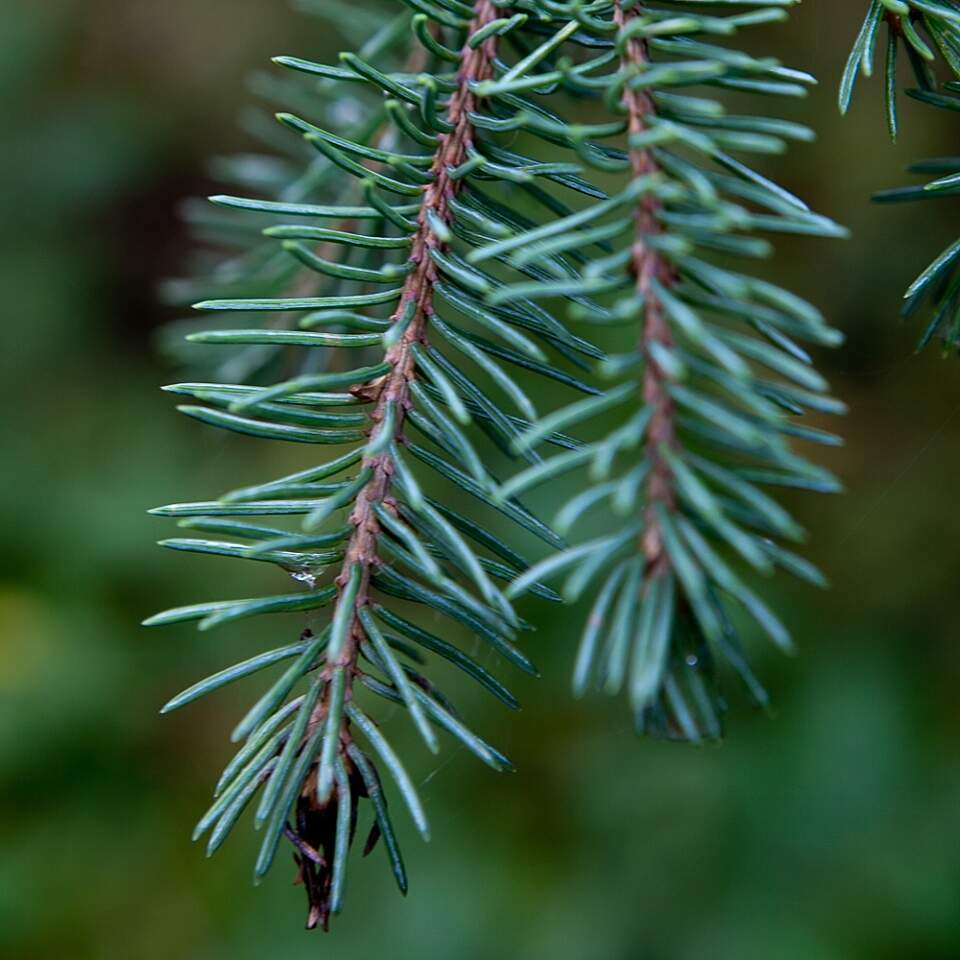
White Spruce
Boreal forests must withstand harsh conditions, which include: long, frigid winters, short, dry summers, and frequent fires. Boreal forests are mostly dominated by trees with needles such as white and black spruce. Mixed in an amongst the spruce are trees with leaves vs needles, such as aspen, birch and poplar which add a splash of color to the landscape in the fall when their leaves turn yellow.
White Spruce
White spruce is a large tree, typically reaching heights of 40-70’. They have a slender, cone-shaped appearance, wide at the bottom to narrow at the top. The shape prevents snow from piling on branches and allows the branches to receive more direct sunlight without shading other branches. Grab some of the blue-green needles (3/4”) and crush them between your fingers for a “piney woods” fragrance. On the underside of those needles look for a white waxy coating and you will see where the tree gets its name from. The cones are scattered through the branches and the seeds are a favorite of many birds like the white-winged crossbill and common redpoll. White spruce is susceptible to insect pests and a bark beetle infestation on the Kenai Peninsula in the 1990s damaged over 3 million acres. Today that native beetle species is experiencing a resurgence and is killing trees from Anchorage to Denali. Byers Lake in Denali State Park is a great place to experience the white sprue forest and a nice opportunity to stretch your legs on your drive north or south.
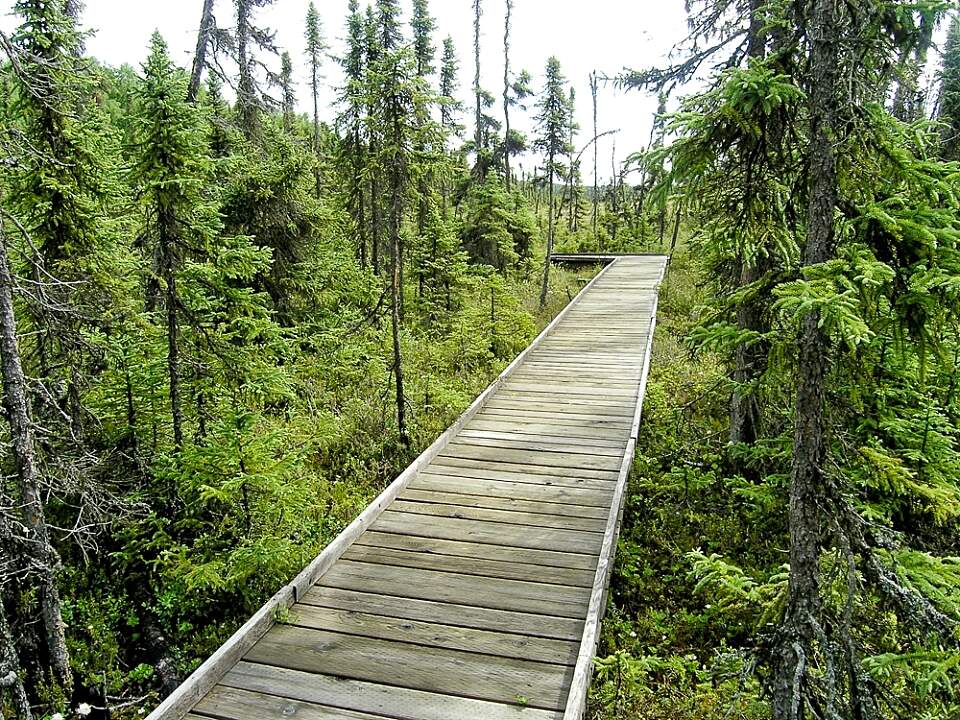
Black Spruce
Black Spruce
The black spruce is one tough tree! They prefer living in cold, poorly drained areas, such as swamps or bogs. For plants, the secret to survival in high latitudes is to grow slow and stay small. Black spruce rarely grow taller than 45’and some of the smaller 10’ trees might be 80 years old! Look for distinctive short upper branches with cones concentrated at the top. Grab a twig and look for fuzzy dark brown hairs covering the stem. If you are hiking in Chugach or Denali State Parks you will find black spruce in wet areas amongst a forest dominated by white spruce.
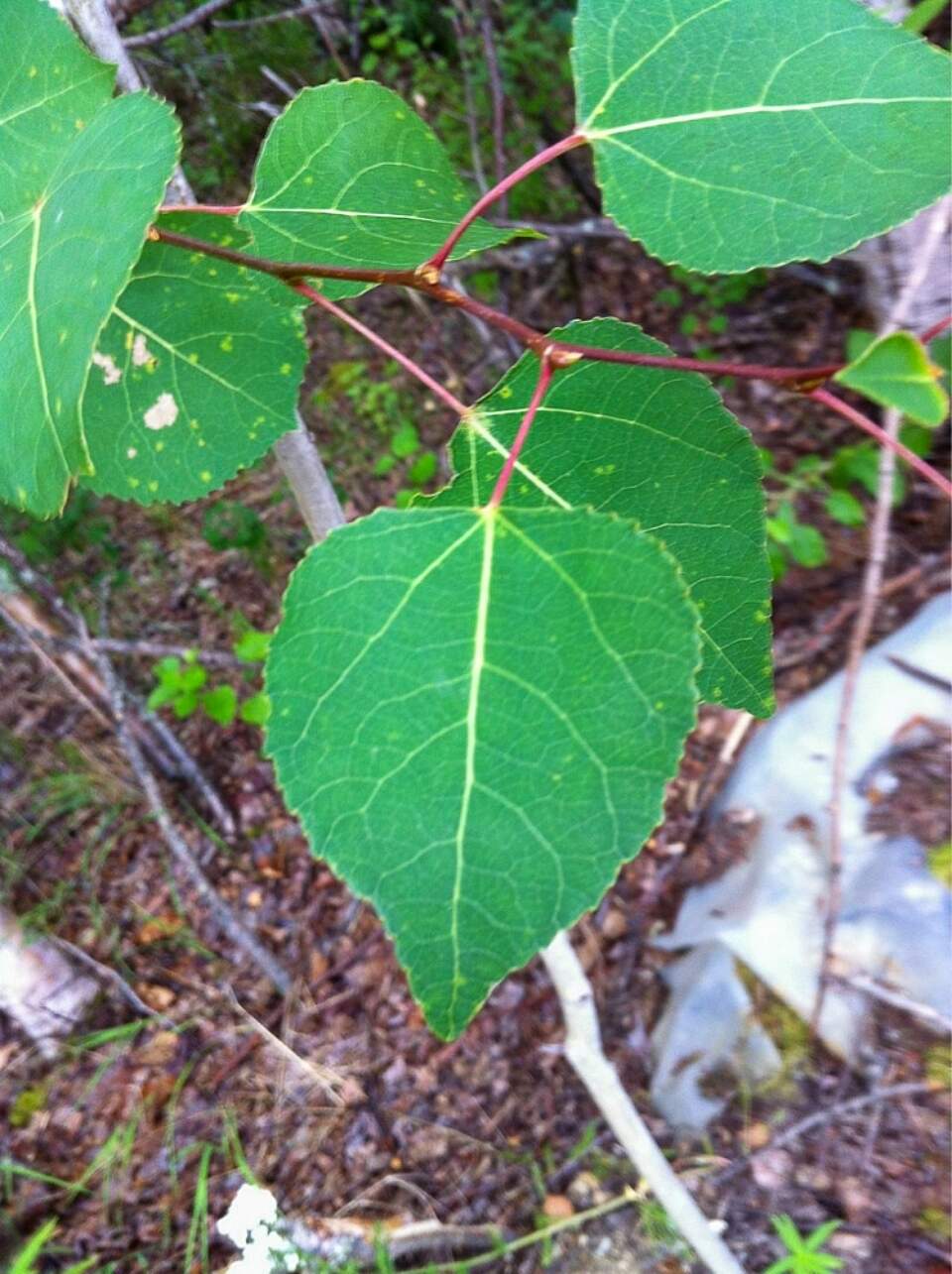
Aspen
The largest plant on the planet
Most aspens are clonal meaning they reproduce by sending out underground shoots. From those shoots genetically identical trees grow. In Utah, scientists discovered a clone that is actually 100 acres and is the largest known living thing on Earth. These clones are easy to see in the fall as they all turn yellow and lose their leaves at the same time. The common name “trembling” aspen comes from the flat vs roundleaf stem. The flat stem is attached at a 90-degree angle to the flat leaf, which makes the leaves sensitive to the slightest movement of air. Find a sunny spot, lay or sit down on the ground and listen to the trees whisper to one another as they make their trembling sound. In the winter moose eat aspen bark. They strip the aspen bark using their front teeth, leaving long vertical scrapings on the trunks. Look for evidence of moose chew marks on the trees as you enjoy the beauty of the Aspen grove.
Animals
WOW that moose is BIG
Did you know that Alaska has the largest species of moose on the planet? This unmistakable species is the largest (1500lbs, 7’ + tall) member of the deer family. In the summer they eat: pond plants, willow, aspen and birch leaves. In the winter when the leaves are gone and the ponds are frozen they eat the twigs and bark. Can you see antlers? If you do then you are looking at a male and those antlers are the fastest growing bone in any animal. Moose antlers grow an inch a day and by fall mature males will have a rack that spreads 80” and weighs 80 pounds! Potters Marsh south of Anchorage is a great place to look for moose.
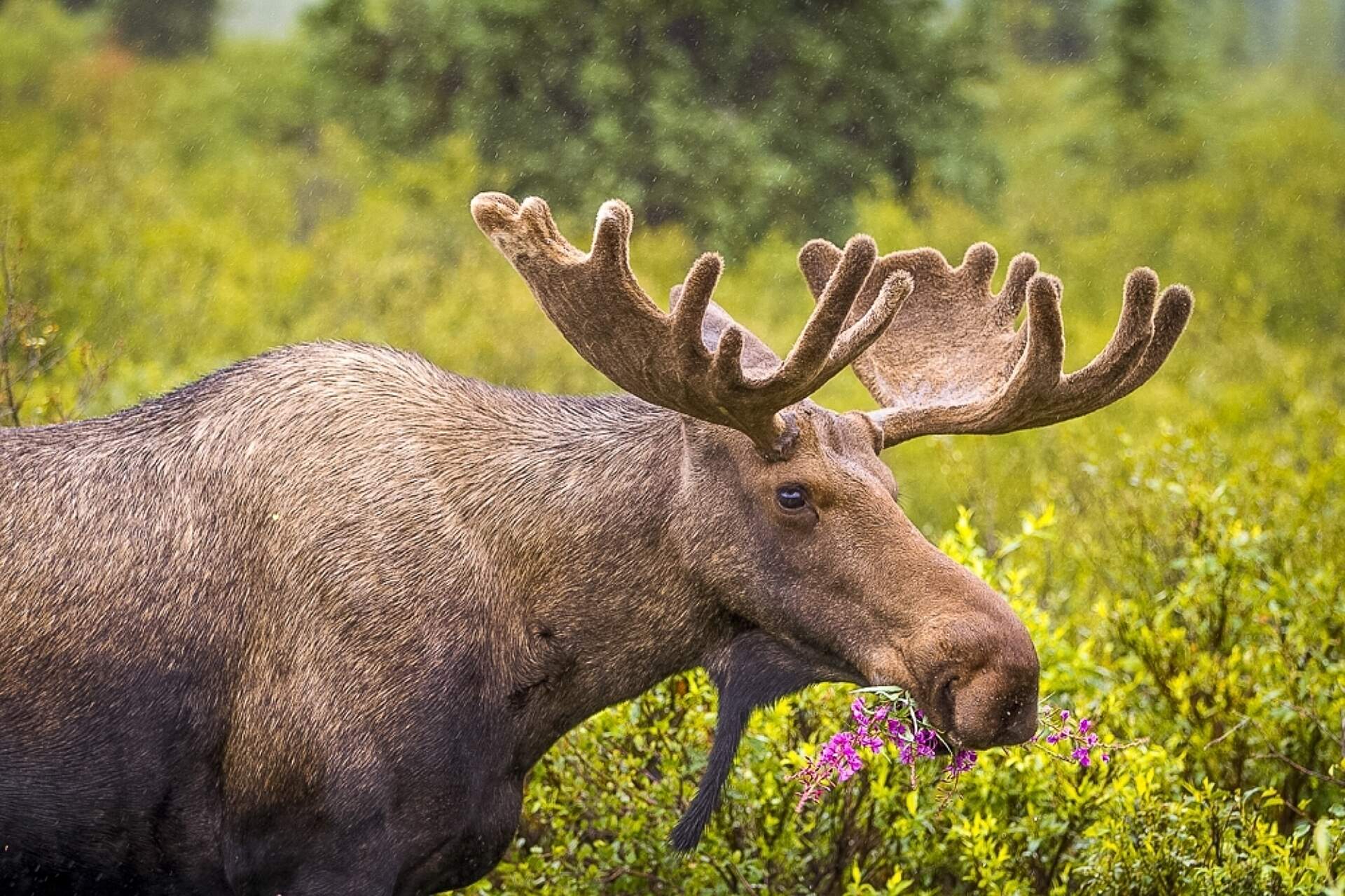
Moose
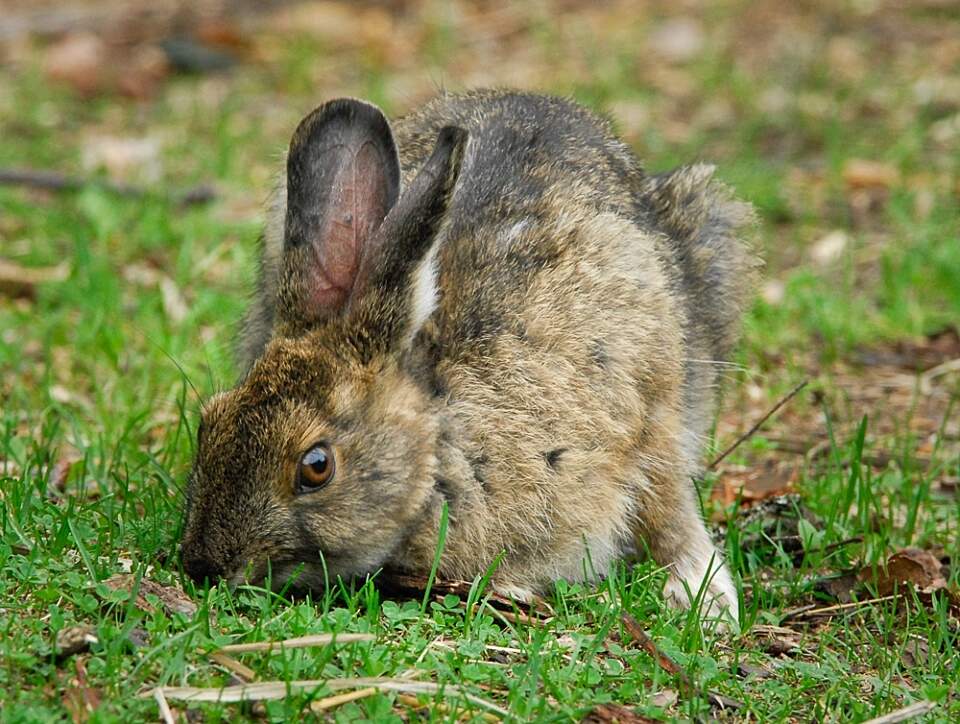
Snowshoe Hare
An animal that changes color
Snowshoe hares have large, furry feet that act as snowshoes for traveling on top of the snow and large ears that give them excellent hearing. In the summer they eat grasses, willow and berries and in the winter using their sharp front teeth they subsist mostly on small twigs. As you're walking through the forest look for slender twigs of aspen and willow neatly snipped as 45 degree angels or a pile of their small, slightly flattened, fibrous brown pellets of poop. In the summer their fur is grayish brown but in the winter these animals turn white. As days get shorter in autumn, the pituitary gland, which is responsible for the pigment production of the brown fur, becomes inactive and the hair turns white. In spring the reverse happens. The pituitary gland, triggered by increased daylight, begins to function again and their fur turns brown. Being white in the winter helps to protect them from their predators: lynx, weasel and owls.
Wild cat in Alaska
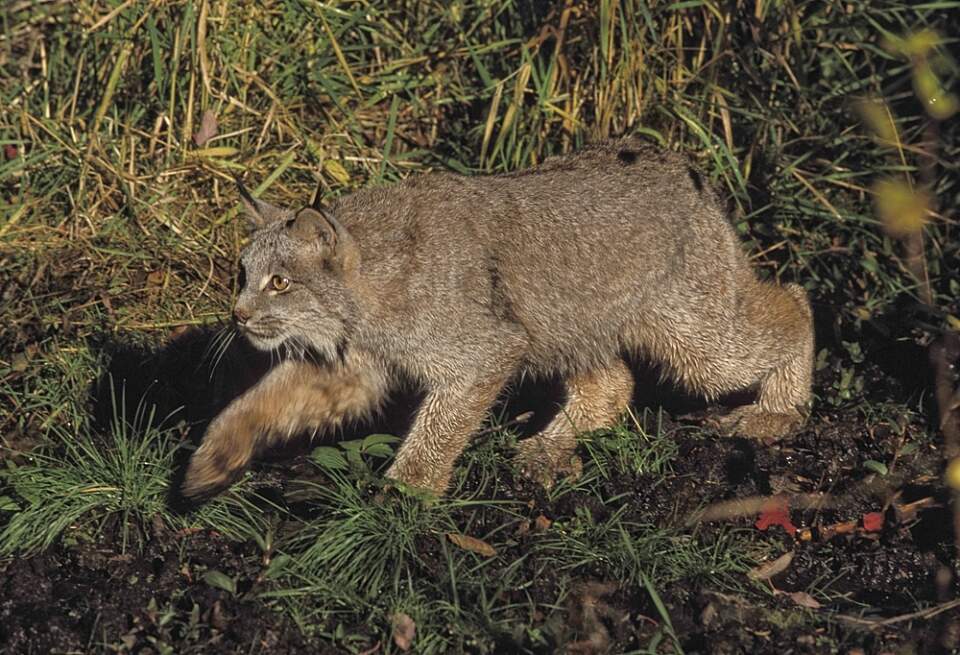
Lynx. Photo credit: Erwin Peggy Bauer
The lynx is the only cat native to Alaska. A large, short-tailed cat, similar to the bobcat, lynx have long legs, furry feet, long tufts on the top of each ear, and a short-black tipped tail. They have big, furry paws, that act like snowshoes when its feet land and the toes spread way out. Their snowshoe like paws, help them to chase down hares in the winter. Lynx depend heavily on snowshoe hares and their populations go up and down with the cycles of the hare. While an elusive animal and rare sighting you can sometimes see them bounding across the Parks Highway or trails throughout the boreal forest.
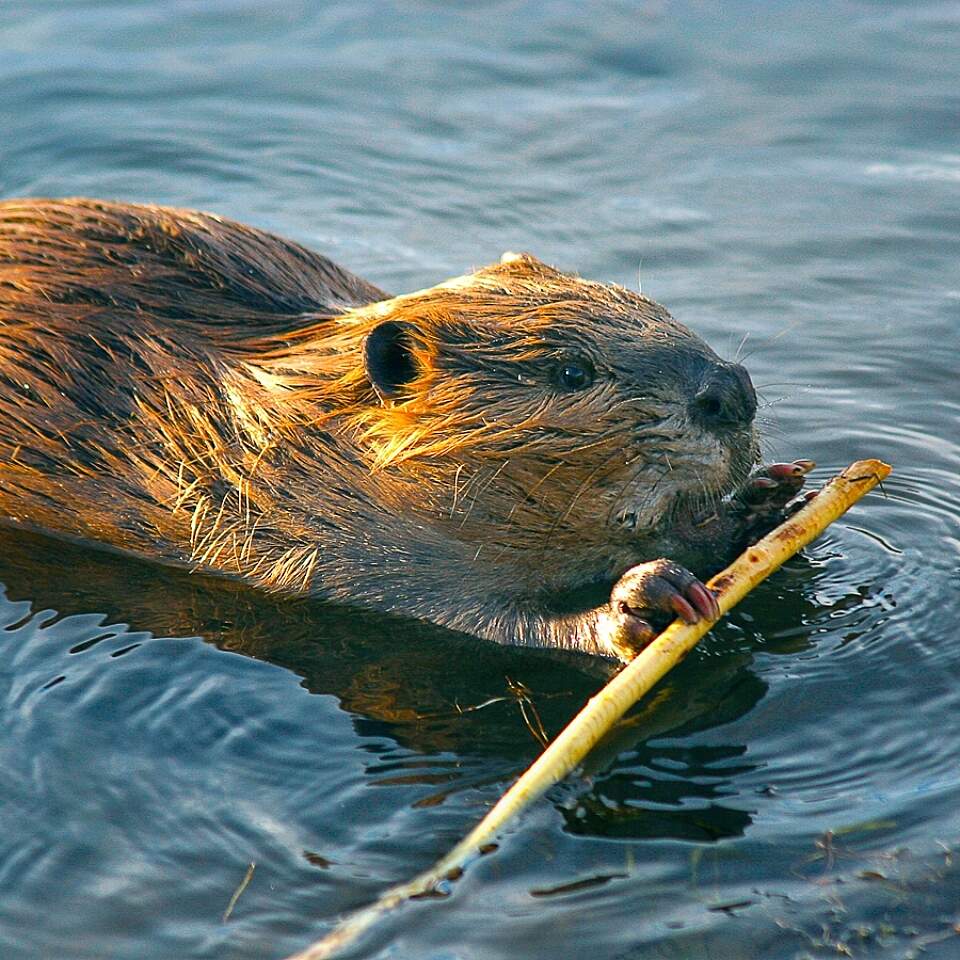
Beaver. Photo credit: Wedgewood Wildlife Sanctuary
Nature's amazing engineers
Beavers are the largest rodent in North America and can weigh up to 70 pounds. If the habitat does not have the necessary water level for beavers to move around in, they build dams. Dams look like walls of logs, sticks, rocks and mud and are built on small streams. The dam backs up water creating ponds that give the beaver easy access to trees. Alder, poplar, aspen, willow and birch are used for building materials. Selected trees have 2-6” diameter, some may be as big as 33 inches. Beavers also build lodges. The lodge looks like a big pile of sticks up to 10’ tall and is where the beavers live with their life long mates and young from several previous years. By reducing its need to travel over land, the beaver is less vulnerable to bears, wolves and wolverines. In the process of gathering their building materials they alter the landscape. In fact, no animal alters the landscape more than beaver, other than humans. Look for beaver lodges in ponds just back from the Parks Highway between Talkeetna and Denali. Look for beavers swimming across the pond, dragging sticks in their mouths to the dam or lodge. You will notice quite a bit of their 3’ long body sits above the surface of the water when they swim and their ears are obvious. Beavers slap their flat tails on the surface of the pond to warn other beavers of danger. Listen for a loud smack and splash that sounds like someone doing a “cannonball” into the water. The sound is always a bit surprising especially if you are unaware that beavers are in the area.
Birds
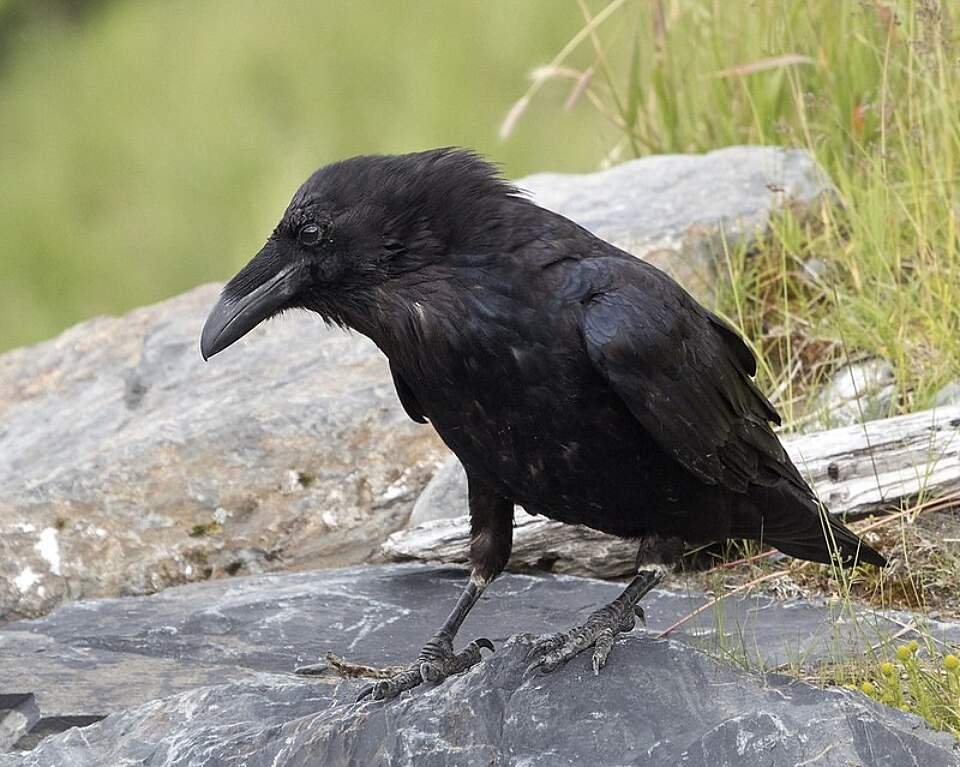
Raven. Photo credit: C. Watts - Flickr
What is that big black bird?
The common raven is the largest species of song bird. They produce more than 30 vocalizations from deep croaks to high bell like notes. Ravens are as big as Red-tailed Hawks with a 4’wingspan and are the largest all black bird in the world. Ravens have a long head and large heavy bill and a wedge-shaped tail. While they resemble the smaller crow, crows live along the coast and will not be found in the boreal forest. Ravens take advantage of eating anything edible from ground squirrels, snowshoe hares to noodles from the dumpster. Ravens mate for life and remain together all year. Look for two big black birds flying together or at a pull out along the highway. If you spot these birds than you have spotted one of Alaska’s few birds that do not migrate south in the winter. Raven legends are wide spread through many Pacific northwest tribes. Native people regard raven as a trickster, bringing fire to people by stealing it from the sun, and stealing salmon only to drop them in rivers all over the world.
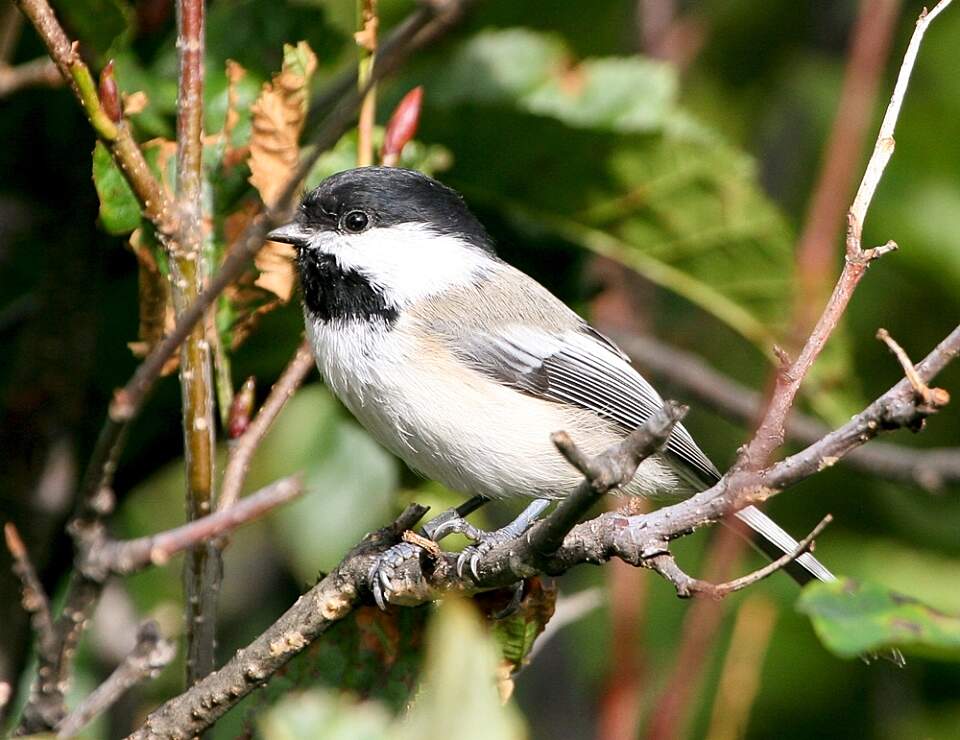
Black-capped Chickadee. Photo credit: Donna Dewhurst
Bird Brain
Black-capped chickadees are a small songbird with white cheeks and a black head. Most song birds in Alaska migrate in the winter to areas where food is more abundant but the chickadee is one of our winter residents. Chickadees feed mostly on seeds and insects. They scatter hoard their food meaning they pick up one seed at a time and hide it in a fork in a tree or a crack in tree bark. How do they remember where they store their food? The hippocampus, the part of the brain associated with memory storage, is larger than in birds that do not store food. That part of the brain grows larger in October, just before the birds begin their winter scatter hoarding. So, this bird’s brain is larger than most birds of their size and they can remember where they store their food! Look for them where alders and birch grow around Denali State Park.
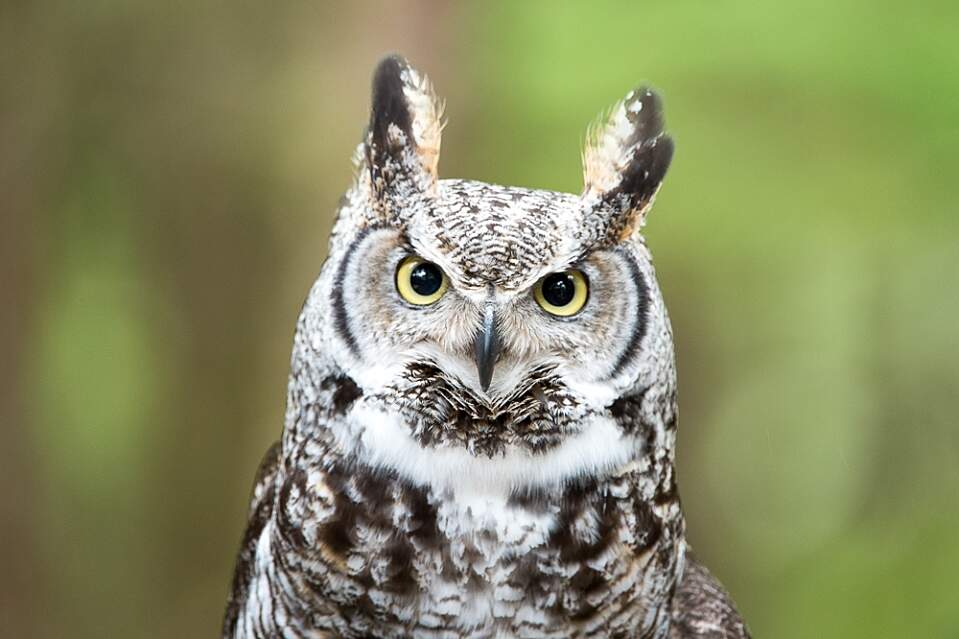
Great Horned Owl
What's the biggest owl in Alaska?
Great-horned owls are big birds. They weigh up to5 pounds, stand 2’ tall and with their wings spread reach over 4.5 feet. They sound like a muffled foghorn from a distance. Listen for their deep, soft hoots with a stuttering rhythm: hoo-h’HOO-hoo-hoo. They have large yellow eyes and excellent night vision. Their eyes don’t move in their sockets, but they can swivel their heads 270 degrees to look in any direction. Great-horned owls are equipped with a facial disk, a group of feathers around their heads that helps direct sound to their ears. To get an idea of how it works, cup your hands behind your ears and listen-sounds will be louder and clearer. They rely mainly on their good vision and hearing to find snowshoe hares, red squirrels and voles. The owl’s flight feathers have soft edges that reduce noise and allow it to fly silently and ambush prey. Grasping the animal with their claws they can carry prey larger or heavier than the owls themselves. Prime hunting time tends to be in the twilight hours near dusk and dawn.

